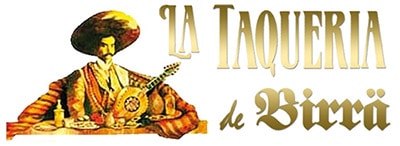Mexican cuisine is one of the richest and most diverse in the world, and has been influenced by a variety of cultures throughout its history.
What influences does Mexican cuisine have?
Some of the main influences on Mexican gastronomy are:
Indigenous culture

Indigenous culture plays a fundamental role in Mexican gastronomy, as much of the basis of traditional Mexican food comes from the pre-Hispanic indigenous cultures that inhabited the territory long before the arrival of Europeans.
Some of the most prominent influences and elements of indigenous culture in Mexican gastronomy are:
- Use of corn: Corn is one of the most important and emblematic foods in Mexican gastronomy, and its cultivation dates back to indigenous civilisations such as the Aztecs and the Mayas.
Corn is used to make tortillas, tamales, pozole, atole and many other preparations.
- Chillies and herbs: Chillies were used by indigenous cultures to add flavour and spice to their food, and are still an essential ingredient in Mexican cuisine.
- In addition, many herbs and aromatic plants such as epazote, coriander and cumin are used in Mexican cuisine, influenced by indigenous traditions.
- Beans: Beans were an important source of protein for indigenous cultures and are still an essential part of the Mexican diet in the form of refried beans, black beans and other dishes.
- Avocado: Avocado, native to Mexico, was a common food among indigenous cultures and is used to make guacamole and in other Mexican dishes.
- Cocoa: The Aztecs and Mayans cultivated and consumed cocoa, which was used to make chocolate drinks. This influenced the creation of chocolate and mole, a traditional Mexican dish.
- Cooking techniques: Indigenous cultures developed cooking techniques such as nixtamalisation, which is the process of cooking and soaking corn in a solution alkaline to make corn dough. This allowed the creation of tortillas and other corn products.
- Use of insects: Some indigenous cultures incorporate insects such as chapulines (grasshoppers) into their diet, and this is still practiced in some regions of Mexico.
- Native plants: Indigenous cultures collected wild edible plants such as huauzontle and quelite, which are used in salads and stews.
Spanish culture

The Spanish influence on Mexican cuisine is significant and dates back to the time of the Spanish conquest of Mexico in the 16th century.
During this period, there was an exchange of ingredients, culinary techniques and flavours that shaped Mexican food as we know it today. Some of the main Spanish influences on Mexican cuisine are:
- Beef and pork: The Spanish introduced cattle and pigs to Mexico, which led to the consumption of beef and pork in the Mexican diet. This led to the creation of dishes such as pork tamales and tacos al pastor.
- Wheat and bread: The Spanish also introduced wheat cultivation and bread making. Although maize remained the staple food, bread became an additional element in the Mexican diet.
- Olive oil: Olive oil became an important ingredient in Mexican cuisine, being used for frying and seasoning food.
- Herbs and spices: The Spanish also brought with them a wide variety of herbs and spices, such as parsley, cumin, saffron and bay leaves, which were incorporated into Mexican cuisine.
- Sweets and desserts: The Spanish influenced the creation of a wide variety of sweets and desserts in Mexico, such as rice pudding, churros and flan.
- Culinary techniques: The Spanish introduced culinary techniques such as baking and the preparation of sauces, which led to the development of dishes such as mole.
- Cheese and dairy products: The production of cheese and dairy products, such as cream and yoghurt, became part of Mexican cuisine.
- Wine and spirits: The Spanish also introduced viticulture and wine production, as well as spirits such as aguardiente, which were used in the preparation of drinks and sauces.
- Preserves and pickles: The preservation of food in vinegar and oil, as well as the production of jams and preserves, were adopted from Spanish traditions.
Culinary miscegenation resulted in the fusion of indigenous ingredients and techniques with Spanish influences that inspired the creation of recipes and dishes unique to Mexico, such as mole, tamales, chiles en nogada and others.
American culture

American influence on Mexican gastronomy has increased in recent decades due to the geographical proximity between the United States and Mexico, as well as the migration of Mexicans to the United States and the influence of American culture in Mexico.
Some of the main ways in which U.S. influence has impacted Mexican gastronomy are:
- American restaurant chains: The presence of American fast food chains in Mexico has led to the creation of Mexican versions of hamburgers, fries and other dishes.
In addition, some elements of fast food, such as burritos, have been adapted and popularised around the world thanks to these franchises.
- Imported ingredients: The availability of US products in the Mexican market has led to the incorporation of ingredients such as cheddar cheese, bacon and US-cut beef into Mexican cuisine.
- Culinary fusion: In some regions of Mexico, there has been a trend towards the fusion of elements of Mexican and American cuisine.
This has resulted in dishes such as “hamburguesas al pastor” or “tacos de ribeye”.
This culinary fusion has given rise to other gastronomic approaches such as Tex-Mex cuisine, a fusion of elements of Mexican and Texan cuisine, which has influenced the way certain dishes are prepared and served in Mexico, such as nachos, enchiladas and burritos.
- American beverages: American beverages, such as sodas and beers, are widely consumed in Mexico.
In addition, the popularity of cocktails such as the margarita and Mexican beer has also been greatly influenced by American drinking culture.
French culture

The French influence on Mexican gastronomy is an interesting and relatively lesser-known aspect, but one that has still left a profound mark on Mexican cuisine.
This influence is the result of the French presence in Mexico during the 19th and early 20th centuries, particularly during the Second Mexican Empire under the rule of Emperor Maximilian of Habsburg.
Some of the ways in which the French influence is reflected in Mexican gastronomy are the following:
- Bakery and pastries: The French influence can be clearly seen in Mexican bakery and pastries.
The introduction of French baking techniques led to the creation of breads and pastries such as the bun, croissant, éclair and baguette, which have become part of the regular offerings in Mexican bakeries.
- Sauces and creamy sauces: The French influence is reflected in the creation of sauces and creamy sauces in Mexican cuisine.
For example, mushroom sauce and walnut sauce are examples of French-influenced sauces served with Mexican dishes.
- Haute cuisine dishes: During the time of the Second Mexican Empire, French-inspired haute cuisine dishes became popular in Mexico.

Examples include chateaubriand or duck à l’orange, which were served at the imperial court and in high society restaurants.
- Cream and butter: Cream and butter became common ingredients in Mexican cuisine due to French influence. These ingredients are used in various sauces and stews.
- Wines and cheeses: The introduction of wine and cheese culture in Mexico was also part of the French influence. The production and consumption of Mexican wines and cheeses developed partly due to this influence, in addition to the Spanish influence.
- Crepes: Crepes, similar to French crepes, have become a popular dish in Mexico. They are filled with a wide variety of ingredients, from sweet to savoury, and are served in restaurants and street stalls across the country and around the world.
- Cafeterias and bistros: The café and bistro culture, typical of the French tradition, has also influenced the Mexican gastronomic scene.
In cities such as Mexico City, you can find numerous French-influenced cafés and restaurants.At La Taqueria de Birra we are experts in tacos and Mexican food since 1989, so if you want to taste a good Michelada or any other drink or traditional dish, we invite you to order take away or come and try our Mexican restaurant in C/ Don Pedro, 11 or in Plaza de las Comendadoras, 2.

